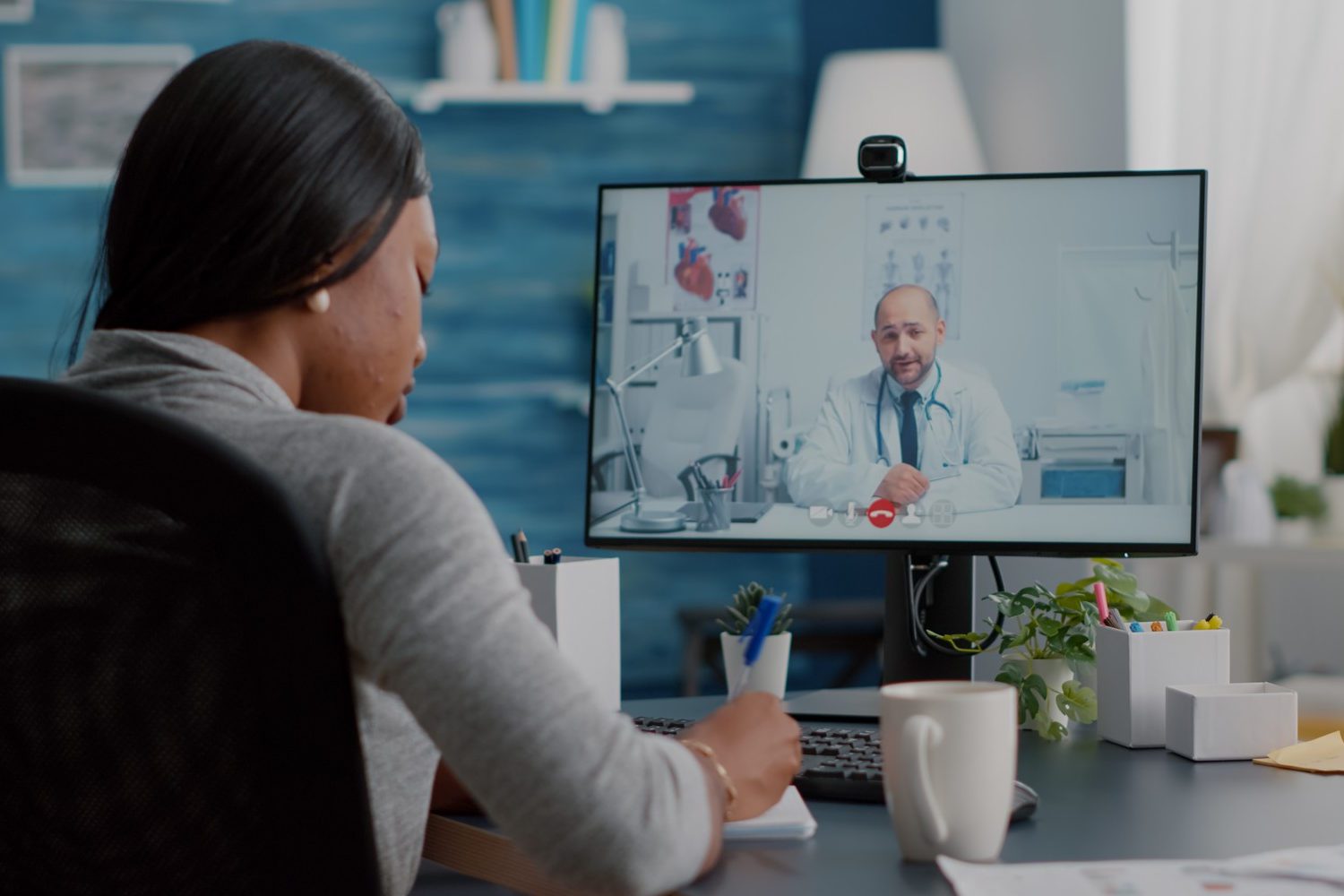Telehealth has been around a lot longer than you may think

Telehealth has been around a lot longer than you may think. The pandemic has made telehealth and telemedicine more of a household word as physicians limited patient’s in-person visits out of concern of spreading Covid-19. Since 2020, virtual visits have become the norm and adding a blood pressure kit, oximeter and improved electric thermometer to your Amazon cart has happened for almost all of us. But did you know that telehealth first appeared in the 1940’s through telephone lines? And with the advancement of the motion picture industry came the technology that influenced today’s video medicine.
In addition to platforms like Skype, and Zoom for health, there are many new HIPAA compliant technologies that enable you to speak with your provider via computer, phone or tablet almost anytime, day or night. This round the clock availability provides you with access to a healthcare provider at those times of day previously regulated to an “urgent care” or emergency room visit.
Dr. Janice Johnston, MD, Chief Medical Officer and Co-Founder of Redirect Health tells us that telehealth allowed her to diagnose and treat conditions virtually that range from pink eye to managing someone’s glucose levels. “Telehealth has benefited the person with open access but also meaningful follow up.” says, Dr. Johnston. A patient that met with her at 2p.m. could follow up that evening if the symptoms got worse.
This ease of connection offers great relief to both patient and caregiver, as no one has to be untethered from the care they need. If things get worse, a Redirect Health provider can schedule a virtual follow-up visit to determine the best next steps, coordinate care at the local hospital or urgent care clinic and then alert the facility when the patient is on their way.
The new approach to managing medical needs
Redirect Health makes healthcare work with a people-first approach to care, offering access to streamlined, affordable healthcare. Redirect Health combines physician expertise via the company’s own employed staff, easy-to-use technology and pro-active population health to bring transparency to care and cost.
It works like this: if you wake up with a sore throat, instead of calling your primary care doctor or heading over to the urgent care, a patient uses the Redirect Health app or care number. A concierge team speaks with you as a person, not an ID or group number. They ask what your symptoms are and help guide you to the best care. You may have a virtual visit with a provider or perhaps it will be to order your lab work. If that is the case, you’ll head directly to the lab and then have a follow up visit to go over results.
This is all included in the monthly fee. You are not limited to the number of times you can speak with a provider and don’t have to worry about co-pays, deductibles and excessive time spent with a provider. It’s all part of the standard plan.
The big difference is that, instead of stepping into a doctors office, you are in the comfort of your own home. Your providers are dressed just like you, so no white coat syndrome. They want you to feel as comfortable as possible and not rush you out the door. If your telehealth plan is like one from Redirect Health, your provider is equipped with your medical history, current and past medications and has any on hand notes from past appointments, all to help you get the best care possible.
If you were seeing a traditional doctor or lab, the time spent traveling to different offices alone would have taken significantly longer and could have amounted to weeks of lost time. Telehealth makes it possible to have a virtual visit and start treatment almost immediately without needing to go to the ER or urgent care. This basic difference saves time, money, offers faster relief and more complete answers to you.

Benefits of managing a chronic condition
What about chronic conditions like diabetes or thyroid conditions? A telehealth provider can help monitor your health with lab orders to stay on top of your levels and have a direct contact to check in with you 24/7.
Covid-19 is a perfect example of how telehealth can be a lifeline when you are battling an unknown virus. Each case is so different, one minute you are breathing fine and the next minute gasping for air. A telehealth provider can assess your symptoms virtually by watching how you speak, cough and your appearance to make quick decisions about the care you need. They are also there throughout the night to contact if any new symptoms may arise and can prescribe the medications that may be necessary to get you feeling better again.
Healthcare can have many barriers and cost shouldn’t be one of them.
Far too many people get concerned when they see their provider and the visit calls for additional procedures and tests. If you don’t have a comprehensive insurance plan and/or if you are self-pay, the unknown costs can cause you to hesitate. What will the tests cost? How many will there be? What other unknown procedures are lurking around the corner? If you have ever been in this situation, you know it can feel scary staring at an open bill. Unfortunately, some people stop their treatment at this stage for this very reason, resulting in prolonging your symptoms and extending the time to start the healing process.
It’s important to note not all physicians are aware of the cost of medication or tests. On a telehealth plan, your provider can often begin with just one or two items on a bigger list to see if the first tests/procedures bring relief. The ease of frequent check-ins allows for easier connection between patient and provider and eases the stress of waiting for appointments and additional cost associated with it.
Telehealth, an option to explore
Inquire with your insurance if they offer a virtual service. If they do not, you can find plans out there that offer telemedicine services and have regular open enrollment so you can sign on as a member and have access to their providers. Consider your lifestyle if you think this may work for you. Services like Redirect Health are a great option if you have children because no one wants to get out of their comfy bed at 2a.m. to go to the ER for their 5 years old’s rash or upset tummy.
Remember as you look at plans to be sure and include the following items:
- Ability to see the same provider multiple times
- Available 24/7/365
- Easy access to health history once you have provided it
The pandemic may have propelled virtual medicine into our lives, but the quality and access to care will launch this service into the mainstream soon. The good news is that this shift will improve the healthcare experience for everyone, not just people who are on specialized plans.
Melissa Blatt is the founder of indipop, simple and affordable healthcare for the self employed. To learn more about health plans that offer 24/7 virtual care, visit. www.indipop.co

Melissa Blatt is the founder of indipop, a marketplace that offers high-value, simple and affordable healthcare for the self-employed. Curious about healthshare plans from indipop? Within minutes, you can be matched with the best fit for your budget and needs. To get started, visit their website. https://indipop.co/


0 Comments